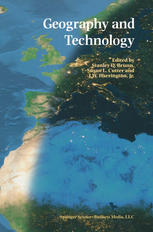

Most ebook files are in PDF format, so you can easily read them using various software such as Foxit Reader or directly on the Google Chrome browser.
Some ebook files are released by publishers in other formats such as .awz, .mobi, .epub, .fb2, etc. You may need to install specific software to read these formats on mobile/PC, such as Calibre.
Please read the tutorial at this link: https://ebookbell.com/faq
We offer FREE conversion to the popular formats you request; however, this may take some time. Therefore, right after payment, please email us, and we will try to provide the service as quickly as possible.
For some exceptional file formats or broken links (if any), please refrain from opening any disputes. Instead, email us first, and we will try to assist within a maximum of 6 hours.
EbookBell Team

4.1
10 reviewsIt is particularly appropriate that the AAG's Centennial Celebration should prompt the publication of a volume devoted to Geography and Technology. New technologies have always been important in advancing geographic understanding, but never have they been so thoroughly and rapidly transformative of the discipline as at this stage in geography's evolution. Just as new technologies have profoundly expanded both research possibilities and the knowledge base of other disciplines, such as biology, physics or medicine, so too are the revolutionary new geographic technologies developed during the past few decades extending frontiers in geographic research, education and applications. They are also creating new and resurgent roles for geography in both society and in the university. This trend is still accelerating, as the integration of geographic technologies, such as the global positioning system and geographic information systems (GPS/GIS), is creating an explosion of new "real-time, real-world" applications and research capabilities. The resultant dynamic space/time interactive research and management environments created by interactive GPS/GIS, among other technologies, places geography squarely at the forefront of advanced multidisciplinary research and modeling programs, and has created core organization management tools (geographic management systems) which will dramatically change the way governments and businesses work in the decades ahead. While these and other important geographic technologies, including remote sensing, location-based services, and many others addressed in this book, are forging new opportunities for geography and geographers, they also pose challenges.